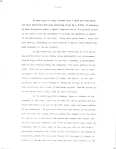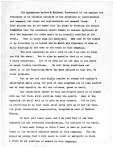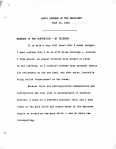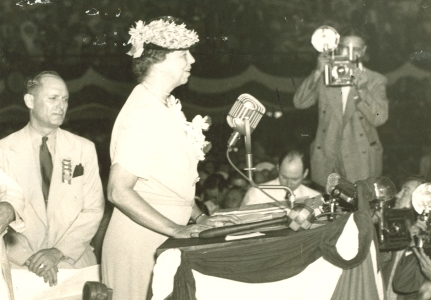You are currently browsing the monthly archive for September 2012.
The FDR Presidential Library and Museum and the Roosevelt Institute are pleased to announce “FDR’s 4 CAMPAIGNS,” a free public forum on October 21, 2012. The forum will consist of two afternoon panel discussions beginning at 1:30 p.m. in the Henry A. Wallace Center at the FDR Presidential Library and Home. Both panels will feature leading scholars and authors discussing Franklin Roosevelt’s historic four presidential campaigns.
In addition to house seating, these programs will be webcast live (linked from the Library’s website) with online viewer participation. Registration is required. Call (845) 486-7745 for information. For a printable agenda visit the Roosevelt Library website’s events page at: http://www.fdrlibrary.marist.edu/publicprograms/calendar.html.
Franklin D. Roosevelt was elected to the presidency four times in the midst of the two greatest crises of the 20th century. Each campaign was unique, reflecting Roosevelt’s evolving vision for the Nation and its place in the world.
 The first panel discussion, beginning at 1:30 p.m., will focus on FDR’s first two elections. His First and Second campaigns took place during the Great Depression. In 1932, he campaigned to bring a New Deal to the American people. The 1936 election was a referendum on Roosevelt’s vision of a progressive government playing an active and positive role in the American economy. This first panel will be moderated by Mary E. Stuckey, Professor of Communication, Georgia State University and author of “Defining Americans: The Presidency and National Identity.” Panelists will include Donald A. Ritchie, Historian of the United States Senate and author of “Electing FDR: The New Deal Campaign of 1932;” and Gregory E. Geddes, Professor of History, State University of New York – Orange and specialist in the history and literature of labor and the American left.
The first panel discussion, beginning at 1:30 p.m., will focus on FDR’s first two elections. His First and Second campaigns took place during the Great Depression. In 1932, he campaigned to bring a New Deal to the American people. The 1936 election was a referendum on Roosevelt’s vision of a progressive government playing an active and positive role in the American economy. This first panel will be moderated by Mary E. Stuckey, Professor of Communication, Georgia State University and author of “Defining Americans: The Presidency and National Identity.” Panelists will include Donald A. Ritchie, Historian of the United States Senate and author of “Electing FDR: The New Deal Campaign of 1932;” and Gregory E. Geddes, Professor of History, State University of New York – Orange and specialist in the history and literature of labor and the American left.
 The second panel, beginning at 3:15 p.m. will discuss FDR’s last two elections. During FDR’s Third and Fourth campaigns, the world was at war. In 1940, the major issues were Roosevelt’s run for a Third Term and whether America would remain isolationist. The 1944 campaign was the first wartime election since the Civil War, and a weary FDR ran for a Fourth Term in order to win the war and ensure the peace. This panel will be moderated by Richard Aldous, Eugene Meyer Professor of British History and Literature, Bard College and author and editor of nine books, including “Reagan and Thatcher.” Panelists will include Charles Peters, founder and former Editor-in-Chief, “The Washington Monthly” and author of “Five Days in Philadelphia: The Amazing ‘We Want Willkie!’ Convention of 1940 and How It Freed FDR to Save the Western World;” and Stanley Weintraub, Professor Emeritus of Arts and Humanities, Pennsylvania State University and author of Final Victory: “FDR’s Extraordinary World War II Presidential Campaign.”
The second panel, beginning at 3:15 p.m. will discuss FDR’s last two elections. During FDR’s Third and Fourth campaigns, the world was at war. In 1940, the major issues were Roosevelt’s run for a Third Term and whether America would remain isolationist. The 1944 campaign was the first wartime election since the Civil War, and a weary FDR ran for a Fourth Term in order to win the war and ensure the peace. This panel will be moderated by Richard Aldous, Eugene Meyer Professor of British History and Literature, Bard College and author and editor of nine books, including “Reagan and Thatcher.” Panelists will include Charles Peters, founder and former Editor-in-Chief, “The Washington Monthly” and author of “Five Days in Philadelphia: The Amazing ‘We Want Willkie!’ Convention of 1940 and How It Freed FDR to Save the Western World;” and Stanley Weintraub, Professor Emeritus of Arts and Humanities, Pennsylvania State University and author of Final Victory: “FDR’s Extraordinary World War II Presidential Campaign.”
One of our most important jobs at the Roosevelt Library is to make sure our researchers have access to the Library’s holdings. Our research room is continuously busy with a mix of authors, students, academics, genealogists and interested people searching through our documents. We are always happy to hear about their experiences in our research room and enjoy sharing their stories with others.
Rabbi A. James Rudin has been researching at the FDR Library and wrote about his experience. We hope you will enjoy his recent article in the Washington Post as much as we did. To read Rabbi Rudin’s article, please visit: http://www.washingtonpost.com/national/on-faith/back-to-the-future/2012/09/19/2df8230a-028f-11e2-9132-f2750cd65f97_story.html
Lynn Bassanese
Forty years ago this month a 20 year old Marist College student walked into the Roosevelt Library to start a part time job as an archives aide. The pay was $2.61 an hour, the work was physical; moving boxes and pushing carts, and the place was inspirational. Fast forward 40 years and I make a lot more money, I only push a cart once in a while to help out and the place is still inspirational.
On my way to becoming the acting director of the Franklin D. Roosevelt Presidential Library I was a GS 2,3,4,5,6,7,9,11,12,13,14, and now a 15. I held a wide variety of jobs from sales store clerk to archivist to director of public programs and even left for four years to pursue motherhood. But the one constant in this wonderful career is that I am inspired every day by the legacy of Franklin and Eleanor Roosevelt and the dedication, knowledge and enthusiasm of the people I am privileged to work with. We all take great pride in being civil service professionals focused on the mission of the National Archives. We safeguard and preserve the records of our government, and ensure that people can discover, use and learn from this documentary heritage. Our job is to make sure our visitors and researchers have access to the Library’s holdings and that we promote research and education on the lives and times of Franklin and Eleanor Roosevelt and their continuing impact on contemporary life.
We have much to look forward to. On June 30, 2013 we will open a brand new permanent museum exhibit and rededicate the Roosevelt Library to the purpose FDR talked about in his dedication speech on June 30, 1941. FDR said “a nation must believe in the capacity of its own people to learn from the past that they gain in judgment in creating their own future.” We believe that is the message we must bring to a new generation of learners and we plan to do just that with an amazing new exhibit, innovative educational programming and informative and interesting public programming. I hope you will join us on our new adventure!
Model of Independence Hall in Philadelphia (MO 1941.12.38)

“Philadelphia is a good city in which to write American history. This is fitting ground on which to reaffirm the faith of our fathers; to pledge ourselves to restore to the people a wider freedom; to give to 1936 as the founders gave to 1776—an American way of life.”
–Franklin D. Roosevelt, Acceptance Speech for the Renomination for the Presidency, Philadelphia, Pennsylvania, June 27, 1936
This 1/16” scale painted plaster model of Independence Hall in Philadelphia, Pennsylvania is one of 2600 historical models created in 1937 by the Pennsylvania Museum Extension Project (MEP), a branch of the New Deal’s Works Progress Administration (WPA). Constructed in collaboration with the Pennsylvania Historical Commission, the model includes a plan drawing of the building’s first floor, illustrating the “Declaration Chamber” and “Supreme Court Chamber,” as well as the center hall, tower, and east and west wings.
 Models like this one were created by the MEP for distribution to schools and historical societies throughout Pennsylvania to commemorate the 150th anniversary of the ratification of the United States Constitution in 1937. This model was presented to President Roosevelt by Pennsylvania Governor George W. Earle as a gift. The President displayed it for a time in the Oval Office.
Models like this one were created by the MEP for distribution to schools and historical societies throughout Pennsylvania to commemorate the 150th anniversary of the ratification of the United States Constitution in 1937. This model was presented to President Roosevelt by Pennsylvania Governor George W. Earle as a gift. The President displayed it for a time in the Oval Office.
Unlike the best-known WPA work programs which employed laborers on highly visible public building projects, the MEP sponsored projects that were less visible, but also important and productive. FDR recognized that white collar workers, artists, and other professionals felt the impact of the Great Depression as much as blue collar workers. The MEP employed a diverse workforce, including educators, artists, architects, and skilled craftspeople. They also provided training to unskilled assembly workers.
Twenty-four states established branches of the MEP. Pennsylvania had one of the most active branches. According to its catalog, its mission was to “offer to the educational world authentic and comparatively graphic presentations of the human race’s evolutionary efforts to house and clothe itself.” During the 1930s, many schools—especially those in rural areas—lacked visual learning materials. Such materials were increasingly being recognized by educators as important tools to foster learning. In addition to educational models, the Pennsylvania MEP created costume illustrations, national flags, illustrations, puzzles, maps, geologic and industrial models, handcraft designs, food models, and other material aimed at “enabling all young minds more readily to get a realistic grasp of vital subjects they may be studying.”
The MEP shop in Pittsburgh, Pennsylvania was commissioned to produce the Independence Hall model. The model and floor plan based on extensive physical documentation of the building. The MEP also created a short play about the Constitutional Convention to accompany the model.
The MEP and the Pennsylvania Historical Commission later collaborated on a History of the Home series, creating numerous architectural models illustrating vernacular architecture from Europe, the Americas, Asia, and Africa as well as historical buildings from Pennsylvania and other states. The Broward Library‘s Bienes Museum of the Modern Book in Fort Lauderdale, Florida has an excellent collection of these models. You can view the models on the Broward Library’s digital catalog at http://digilab.browardlibrary.org/wpa/.
FDR and the Democratic National Convention
“I pledge you, I pledge myself, to a new deal for the American people”
– Franklin D. Roosevelt
This now famous line was uttered by FDR during his acceptance speech at the 1932 Democratic National Convention. FDR was nominated as the Democrat’s presidential candidate four times – 1932, 1936, 1940 & 1944. He made history at the 1932 convention by flying to Chicago to accept the nomination in person – a practice which is still in place today. Aside from those four conventions, FDR also played a role in earlier conventions, and the convention of 1924 marked an important milestone for him and his political career.
1924 – FDR gains national attention
On June 26, 1924 FDR re-entered the public arena at the Democratic National Convention in New York City. Three years before the convention FDR contracted polio, a disease which left him paralyzed from the waist down. Thanks to the work of Louis Howe and Eleanor Roosevelt, FDR was able to stay active in politics while he began his rehabilitation.
In 1924 FDR backed New York Governor Al Smith as the presidential nominee for the Democratic Party, and Smith asked FDR to give his nominating speech at the convention. When on stage, FDR moved to the podium assisted only by his two crutches – a huge feat for him to perform.
In his speech FDR declared Smith to be “The Happy Warrior.” Smith failed to get enough delegates to win the nomination. FDR went on to nominate Smith again at the 1928 convention in Houston. Smith won the Democratic nomination, but lost the presidential election to Herbert Hoover.
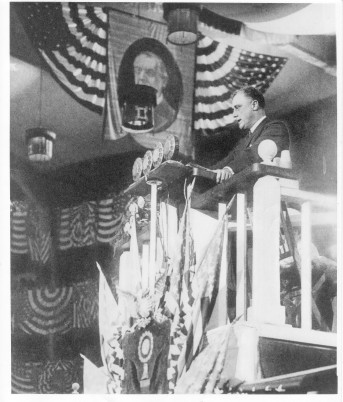
Franklin D. Roosevelt delivers nominating speech for Alfred E. Smith at the Democratic convention, Madison Square Garden, New York, New York. June 26, 1924.
1932 – First nomination for President
The 1932 convention pitted FDR, now governor of New York, against Al Smith and many others. The convention that year was held in Chicago, and after four contentious votes FDR was named as the Democratic nominee for the presidency.
When it came time to accept the nomination, FDR broke with tradition and flew to Chicago to address the convention in person. He acknowledged that fact in the beginning of his speech saying, “the appearance before a National Convention of its nominee for President, to be formally notified of his selection, is unprecedented and unusual, but these are unprecedented and unusual times.”
FDR went on to promise action and relief against the hardships caused by the Great Depression and pledged himself to a “new deal” for all Americans.
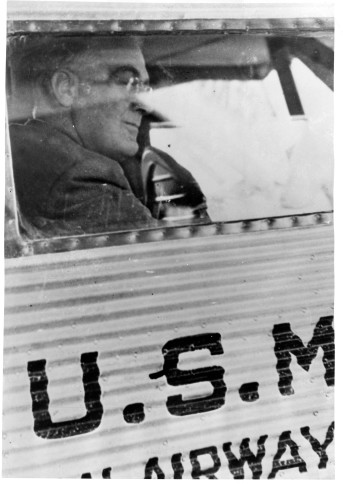
Franklin D. Roosevelt aboard airplane as it refuels in Cleveland, Ohio on his way to Chicago. July 2, 1932.
1936 – First re-election
Philadelphia was the site for the 1936 convention – a convention which was much calmer than that of 1932. FDR and Vice President John Nance Garner were nominated without the need of a roll call, and on June 27th, FDR addressed the convention.
As he spoke, he talked of the need for freedom from tyranny, both political and economic, and of making government the “embodiment of human charity.” FDR went on to say that “there is a mysterious cycle in human events. To some generations much is given. Of other generations much is expected. This generation of Americans has a rendezvous with destiny.”
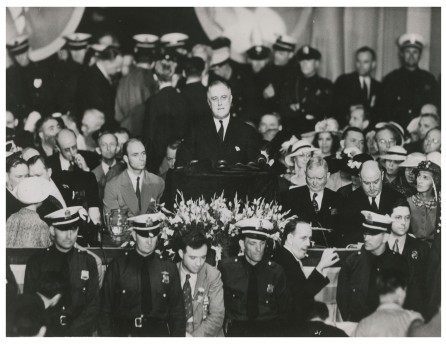
FDR accepts the nomination for the Presidency in speech at Franklin Field, Philadelphia, PA. June 27, 1936.
1940 – An unprecedented third term
1940 brought another convention first. After much speculation, FDR broke with presidential tradition and ran for a third term. While he was easily nominated on the first ballot, the convention was not without some controversy. This time it lay in the nomination of a vice-presidential candidate. The vote came down to two men, Henry Wallace and William Bankhead. FDR was adamant on Wallace being his running mate, but the convention was less convinced.
While FDR did not attend the convention, Eleanor was instead sent to deliver a speech in hopes of bringing together the party. In her address she called for unified action and support for the President. After her speech the convention voted, and Wallace was nominated. For more on Eleanor’s speech, please visit: https://fdrlibrary.wordpress.com/2011/07/21/found-in-the-archives-9/
1944 – A fourth term & final convention
The 1944 convention brought about the unprecedented nomination for a fourth term for FDR. Like the convention in 1940, FDR did not attend this convention. Instead, when the nomination was announced FDR was in California on his way to Hawaii to discuss military strategy for the ongoing war. Even with the easy nomination for FDR, this convention was not without controversy and contention.
Again, the controversy centered on the vice presidential nomination. By 1944 FDR’s health was steadily declining, and many delegates were opposed to Henry Wallace becoming FDR’s possible successor. Harry Truman was proposed as the vice presidential candidate, and though FDR knew little about Truman, he agreed to Truman’s nomination for the sake of party unity.
FDR & Constitution Day
This is the September 17, 1938 radio address FDR gave to the Constitutional Convention in Poughkeepsie, NY. For more information on Constitution Day at the National Archives, please visit: http://www.archives.gov/calendar/constitution-day/
For more documents and photographs from FDR’s presidency, please visit the Franklin D. Roosevelt Day by Day Chronology
FDR and Housing Legislation
September 1, 2012 marked the 75th anniversary of the Wagner-Steagall Housing Act, a piece of late-New Deal legislation that reflected the government’s recognition of adequate housing as an important societal need.
This law established the United States Housing Authority (USHA), which provided $500 million in loans for low-cost housing projects across the country. To Franklin Roosevelt, adequate housing was not just a need, but a right. The Wagner-Steagall Housing Act of 1937, along with other New Deal housing and mortgage initiatives, brought greater economic security to hundreds of thousands of Americans.
For more information on the Wagner-Steagall Housing Act, including documents and photographs from the FDR Library’s archives, please visit: http://www.fdrlibrary.marist.edu/aboutfdr/housing.html




